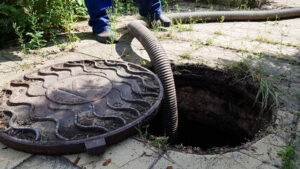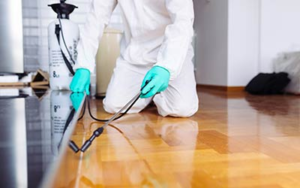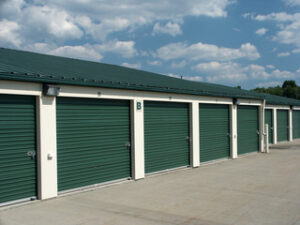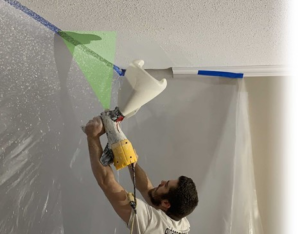Septic tanks must be regularly cleaned and pumped to keep them working properly. A professional can handle this task with ease and ensure that your home’s septic tank system is functioning as it should. Contact Septic Tank Services Near Me for professional help.

A septic tank that fails to receive regular maintenance poses health and environmental hazards. It can back up sewage into your home and create pools of wastewater in your yard.
Choosing a service provider that has a solid track record and years of experience is essential to maintaining your septic tank system. They should be able to provide you with references and samples of their work, highlighting their knowledge, skills, and expertise. This will ensure that you’re getting the highest quality of service, minimizing any potential problems down the line.
Septic system installation begins with a site evaluation by a licensed septic system evaluator who checks the soil, building, and other factors that will determine the best type of septic system for your property. Then, a licensed septic system engineer will design the septic system to meet local and state septic system code requirements. Once approved, the system can be installed by a certified septic tank installer.
Once installed, the tank must be pumped and inspected periodically to prevent sludge buildup and maintain proper function. If left unattended, septic tanks can overflow and create a mess in your yard or drain field, requiring costly and laborious renovation and clean up. Industry standards recommend septic tanks be pumped every 2-3 years.
When selecting a septic tank service provider, look for a company with a proven history of working with all types of septic systems and their components. They should be able to perform inspections, repairs, and system installations for both residential and commercial properties. They should also be able to provide you with detailed quotes, outlining all the necessary services and associated costs.
A reputable company will take pride in their customer service, being readily available to answer your questions and address any concerns you may have. They should also be able to provide references from past clients who can attest to their professionalism, punctuality, and quality of work.
Septic tanks are a critical component of your home’s wastewater treatment and disposal system. They are underground tanks that divide into two chambers, where wastewater undergoes a process of settling and separation. Heavy, solid waste particles settle in the bottom layer, known as sludge, while lighter substances such as grease and oils rise to the top, creating a separate layer called scum. The middle layer, known as effluent, is the cleaned wastewater that leaves your house.
Saves You Money
Septic tank maintenance is a necessary part of owning a home, but it doesn’t have to empty your wallet. It’s not unusual for people to avoid septic tank services due to cost concerns, but there are ways that you can cut costs without cutting corners.
It’s important to have your septic tank pumped at least every three years, or sooner if it is overflowing. If you wait longer, sludge will build up and cost more to pump out. This is because removing heavy solids from the bottom of the tank is more costly and requires extra labor.
Regular septic tank inspections are also crucial to keeping your system functioning properly. During these inspections, technicians can spot small issues before they become bigger problems. This prevents sewage from seeping into your home, which can cause health hazards and a lot of money in repairs.
Clogged drains are another major issue that can be avoided with regular septic tank maintenance. While attempting to clear a drain clog yourself can be cheaper, it’s usually not effective and could actually damage your septic system. Professionals use special tools to remove the clog safely and effectively.
The pipes that transport waste from your home to the septic tank and drain field are subterranean, so they’re relatively protected from the elements. However, that doesn’t mean they’re immune to breaking. All it takes is one rogue tree root to smash into a pipe and cause an expensive repair bill. Through regular septic tank maintenance and inspections, technicians can spot these risks and handle them before they turn into big problems.
Keeping your septic tank well-maintained will save you a lot of money. It’s like going to the doctor for a check up – it’s less expensive to catch issues when they are small than dealing with them as they become larger, more severe problems.
Some easy ways to save on septic tank service are to not flush feminine products and wipes, don’t overuse your water or wash clothes in large batches, and to expose the lids if they are buried deep underground or have rocks backfilled over them. These are small things that can make a big difference in your septic tank’s performance and how often it needs to be pumped.
Saves You Time
There are many benefits to hiring septic tank services, but one of the most important is that they save you time. Trying to clean or pump out your own septic tank is a huge task that requires special tools that most people don’t have access to. Additionally, attempting to clean or repair your septic system without the proper tools can result in extensive damage and cost you even more money in the long run.
When you hire a septic tank company, they will come equipped with all the necessary tools and equipment to get the job done quickly and effectively. They’ll also bring their own trucks that can transport the sewage waste to a septic tank disposal site where it will be processed and safely disposed of.
Another benefit of septic tank services is that they can help you maintain your home’s septic system and keep it in good condition. This is a critical part of your home’s plumbing system, and keeping it in good condition will help prevent issues like clogs and water contamination. Additionally, a septic tank service provider will know how to identify issues that might arise in the future and fix them before they get worse.
Septic tanks are an environmentally friendly way to dispose of wastewater because they cut pollution by filtering the waste before it enters the soil. They also help local plants and wildlife by recycling water, which is absorbed into the ground and used for plant growth.
However, septic tanks require regular cleaning and pumping services to avoid blockages and ensure that they function properly. Without these services, the waste will overflow into the drain field, causing sewage backups and environmental pollution.
Regular septic tank services will also help you maintain your home’s property value. Potential buyers will be wary of a septic tank that hasn’t been cleaned or pumped out in a while, so having the tank regularly inspected and pumped will make your home more appealing to buyers. This will increase your chances of selling your home and getting a better price for it.
Peace of Mind
The septic tank services you hire will not only pump your septic tanks and perform other maintenance tasks, but they will also inspect the system as they work. This allows you to catch any problems early, like cracks in the tank walls, leaks, or other issues that can be easily corrected. This prevents expensive repair bills and helps you keep your septic tank system in tip-top shape.
The service company will also ensure that your septic tank has the proper baffles, which help guide wastewater into the drain field and reduce clogging. They will make sure that the inlet and outlet pipes are free of cracks or damage, and that the septic tank cover is properly sealed. Moreover, they will ensure that the high water alarm is working correctly and is capable of alerting you to septic system problems before it’s too late.
A septic tank that isn’t maintained properly can cause odors, sewage backups, and other issues. These are major problems that can turn off prospective home buyers and drastically lower your property value. Regular septic tank cleaning and pumping services can help you avoid these issues and save your property value.
Many areas have specific guidelines and regulations regarding how often septic systems must be pumped and cleaned. Hiring a professional septic tank service will ensure that you are in compliance with these regulations, and will avoid any fines or penalties related to septic system maintenance.
When a septic tank is pumped, the sludge and scum will be removed from the system, along with any other waste. This will help prevent the contaminants from seeping into groundwater and contaminating your well. If you use groundwater to drink, it’s especially important to pump your septic tank regularly and stay on top of other maintenance tasks.
A well-maintained septic tank can add significant value to your property. It’s a big selling point to prospective buyers and can help you get more money for your property when it comes time to sell. Besides, a well-maintained septic tank is a safe environment for your family and will keep you healthy.








